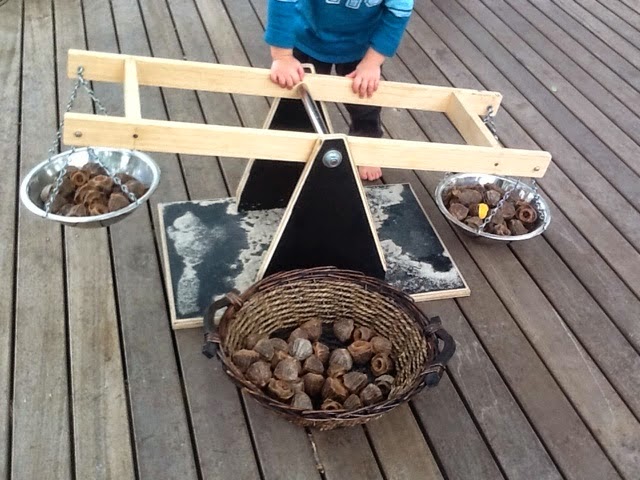 |
| "Sit Stones" and concentration cards along with a book I used for inspiration, "A Handful of Quiet" by Thich Nhat Hanh |
Networking helps with Planning
Over the summer I began planning for our new school year and how to introduce different components that will expand our outdoor education.
Lots of different ideas were swirling about, many inspired by a session led by Amy Beam at the Irvine Nature Preschool Conference. I used our international staff meetings with Kierna (Learning for Life) and Martin Besford (Highway Farm Activity Center) to work out details.
First things first – we introduced cooking campfires last year and then worked out the hiccups during our Summer Tinkering sessions. Both Martin and Kierna have a collection of great things to cook over the campfire, so there were plenty of ideas to share about good things to eat!
After the summer sessions were over, Kierna and I talked about how each time we were scheduled to hold a campfire a few key things would happen; to begin, we both agreed that the fire consistently signaled the same thing to the children -- as soon as the fire is lit, the children gather ‘round and instantly settle. It is a very easy, quiet time and storytelling is a perfect fit. The other thing that would happen is that I would find out that I had forgotten something inside the school, like a hot pad, the tongs, or I would have to make several trips back into the school, for matches or platters. We both agreed that having a bin that held all the gear needed for a campfire session in one place. After talking it through, we put together a list of must-haves from materials to light the fire, safety (I have a fire extinguisher, protective hot pads, and a fire blanket), to utensils and prep items needed for cooking.
Inspired by both Martin and Kierna, we will be offering regular sessions for nature studies that will include components of dramatic play, art, adventure, and simply enjoying the outdoors. We will begin these sessions slowly (another thing I learned from these two) working at first in our own play yard and then moving out, as the weather cools, to our local park grounds.
I have worked out plans for the children to create their own knapsacks that will also serve as seating. These knapsacks will hold a clipboard, a pen, and a small muslin bag that I have personalized for each child. Inside the bag is a small stone for each child to use as something I am calling a “sit stone.” We will use these stones as a way to begin each session outdoors. I also made small cards to fit inside the muslin bags along with the stones which will help the children visualize different components of nature as they sit with their stones. Later they can use these cards to find something that matches during their play (I made both color cards and object cards). We will use the clipboards, pens, and paper to document their discoveries and play.
This Summer work brought about a lot of idea sharing and inspiration. Now school begins and the real work will bring about new ideas and inspiration. I am glad that I have Martin and Kierna to share both the successes and the failures and get their feedback as we go along!
Once again thanks to all those who supported the last Outdoor Play Party by linking up or leaving a comment. My featured post from the last one is from Wild Family Fun - 3 generations went hiking up Pen-y-Fan & the photos prove how much the youngest family member really enjoyed this challenging experience.
- Any kind of children's outdoor play-related posts are welcome!










































